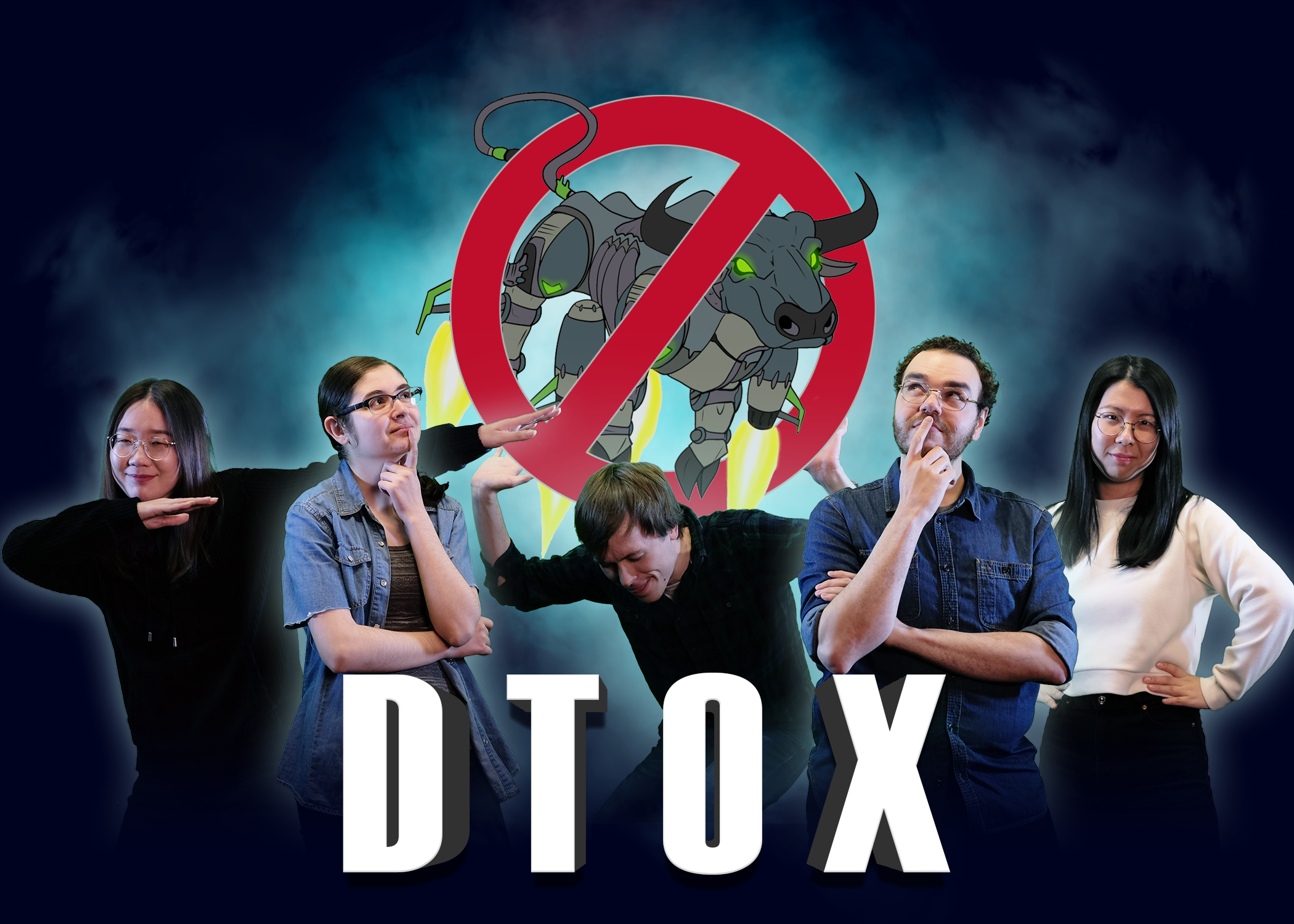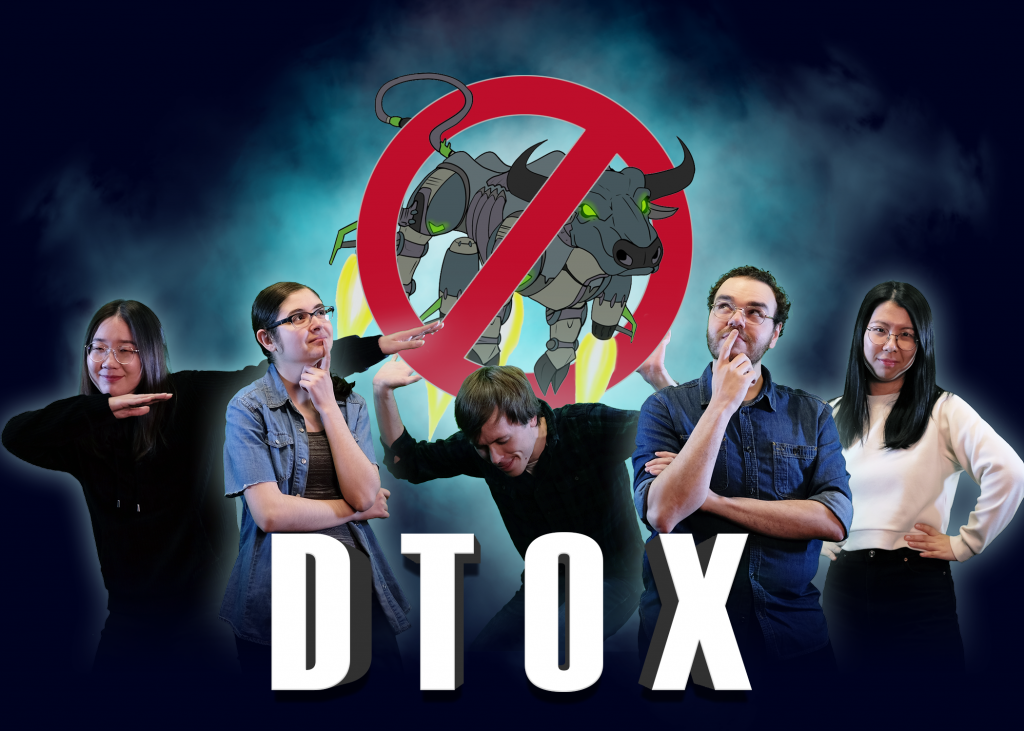Week 4 – Solidifying Ideas & Getting Feedback


Before we really get into it, let’s highlight that we took and edited our team photo this week. As you can see, we are all about the reduction in cyber-bull attacks.
Paper Prototype
Now for the meat and potatoes.
We made a paper prototype to try to crystallize our learnings and exploratory goals into a game. We injected these specific ideas into the prototype:
- Banning is ineffective as a catch-all solution (Common Player Myths)
- Consistently toxic players are a vast minority. (Riot)
- 96% of players that harass have been harassed, ie toxicity is a cycle. (ADL)
- A problem-solving approach to community moderation is more beneficial in the long-term than a power approach. (Katie Salen)
The prototype is a 5-6 player cooperative game about managing a fictional game community. The players take the roll of game developers / community managers and roll dice to determine how their community behaves. Community members, represented by the dice, have varying probabilities to engage in toxic behavior. When something toxic does inevitably happen, it is up to the players to decide how to react. They are given a description of the event from a randomized deck to help them discuss and decide. The actions they can take are banning the offender, reforming a member of the community, or training a member to be an ambassador for positive social norms. While these choices may appear to be evenly balanced at first, a dominant strategy will be built in such that training players as ambassadors is the best way to win.
Feedback & Constructive Criticism
Quarter’s
The ETC’s Quarter’s Presentations were this week. Quarter’s is an opportunity for the team to focus our work thus far and try to get feedback on the direction we are heading from the faculty.
Our notes from Quarter’s have been compiled and reviewed for consistent messages or particularly insightful comments. Some of the biggest takeaways for us were these:
- We need to focus more on the how of reforming people, not just the why.
- One team’s efforts affecting the entire room’s ecosystem is a fun idea.
- We should go back to re-examine exactly how our game tackles specific barriers for transformations.
Sitdowns
We had ETC’s Sitdowns later in the week, in which interested faculty can give us extra feedback if they have it. Important notes we got from that were these:
- Make sure that we are considering the whole event, not just our game. Running a Games for Change festival is not just about making a game.
- There is a good amount of research in regards to actually managing conflicts and disagreements. We were given a few resources to look into.
Meeting with Katie Salen

We met with Katie Salen to discuss our ideas and our prototype. Some prime examples of advice she gave to us are as follows:
- Ensure that our experience showcases a change in the overall social climate rather than a single individual.
- Find a way to encourage meaningful discussions, either inside or outside the game.
- Having different roles for players is interesting.
- Having one game affect the larger room ecosystem is neat.
- Research actual bullying to look for correlations.
Meeting with Jeffrey Lin

We met with Jeffrey Lin to get some specific answers about barriers that prevent people from understanding what our game is attempting to teach, as well as his thoughts on where the industry is headed in terms of toxicity. When asked what barriers existed that prevent people from already knowing that punitive tactics should not be the end-all, be-all answer for toxicity, he gave these:
- Lack of knowledge of other techniques.
- Lack of resources in order to implement other techniques.
- Belief that other techniques are not cost-effective, ie won’t generate enough revenue to be worth it.
When asked for his thoughts on the direction of the industry for dealing with these things, he answered that many organizations are looking into empathy techniques more these days. That is, looking for some way to show the offenders that they aren’t just harassing a faceless nobody and their toxicity is having a real effect. He gave us a few things to look into, such as Project Horseshoe’s work on social systems and communities around games.
Poster & Half-Sheet
We made the final version of the poster. It was edited to more closely resemble the monitor of a computer that was being used. The same design will be used for the half-sheet.
Recent Comments